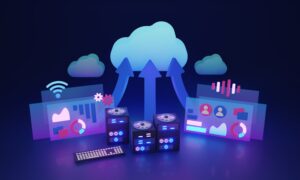You are witnessing a digital revolution as app integrations transform isolated platforms into interconnected ecosystems. Seamless integrations between complementary apps create frictionless workflows, enhancing productivity and user experiences. Yet this shift goes beyond convenience – integrated ecosystems gather data, generate insights, and enable automation across programs. App providers must closely collaborate to align roadmaps and ensure reliable cross-platform functionality. Users stand to benefit from unified interfaces, contextual recommendations, and predictive intelligence. However, open standards and governance will be needed to prevent fragmentation. This new wave of digital ecosystems promises efficiency but requires cooperation. You are at the forefront of this change.
The Rise of App Integrations
Seamless Connectivity
As apps have become more sophisticated, integrations between them have enabled a seamless flow of data and functionality across platforms. This interconnectedness allows users to access information and complete workflows with a high degree of efficiency by reducing repetitive tasks. For example, project management tools can integrate with communication apps to automatically notify team members of task assignments.
Streamlined Experiences
Integrations provide a cohesive experience across multiple services. Users no longer have to manually transfer data between apps or remember which tool stores what information. Integrated apps can automatically pass relevant data between them, creating a unified interface for managing complex workflows or projects. This streamlined interaction enhances productivity and reduces the cognitive load on users.
Ecosystems for Scale
Individual app integrations are evolving into broad digital ecosystems consisting of suites of interconnected services. These ecosystems contain best-of-breed tools for managing all aspects of a business, including operations, marketing, sales, and customer service. As more services join an ecosystem, the network effects increase user value. Ecosystems also foster partnerships between service providers, enabling them to reach more potential customers through cross-promotion.
The Future of Integrated Experiences
App integrations have transformed the way we interact with software and manage information. Seamless connectivity between services creates streamlined experiences that amplify productivity. Integrated digital ecosystems provide a platform for apps to work together at scale, enhancing the value of individual tools and forging new partnerships. This trend toward interconnectedness will continue to shape the future of how we live and work with technology.
How APIs Enable Seamless App Integrations

Simplified Data Exchange
- Application Programming Interfaces (APIs) establish a channel for apps to communicate with one another by sharing data in a structured format. APIs define the methods of data access and the parameters required to retrieve information from an app. This standardization allows apps from different developers to exchange information efficiently.
Streamlined Workflows
- When integrated, apps can automate processes by passing data between one another. For example, a social media management tool could automatically post content to networks by connecting to a content creation app. This removes repetitive manual user work by establishing a seamless workflow across tools.
Expanded Capabilities
- Integrations expand the capabilities of individual apps by allowing them to leverage data and functionality from other services. For instance, a form builder app could easily integrate with a payment processor to collect payments from form submissions. The payment feature would be powered by the payment processor’s API, expanding the form builder’s capabilities without requiring extensive development work.
Tailored Experiences
- With a robust API, apps can tap into a vast ecosystem of integrations to customize users’ experiences. For example, a project management tool could detect the other tools a team uses and recommend integrations to streamline their workflow. Understanding how people use the app can provide a tailored set of integrations for enhanced productivity.
Overall, APIs have enabled a new wave of seamless app integrations, reshaping how we work and interact with software. Integrations continue to expand apps’ potential by connecting them to a wider digital ecosystem. While still a developing landscape, the future points to ever more sophisticated integrations and customized digital experiences.
Benefits of Integrated Digital Ecosystems
Enhanced User Experience
Integrated digital ecosystems connect various apps and services to provide a seamless user experience. Users can access data and perform actions across multiple platforms without signing in and out of individual apps. This streamlined experience saves time and frustration, increasing user satisfaction and retention.
Optimized Business Processes
For businesses, integrated digital ecosystems optimize workflows and processes. Data and actions can flow freely between interrelated apps, automating manual tasks and eliminating data silos. This boosts efficiency, productivity, and data-driven decision-making. Integrations also open new opportunities for growth by allowing businesses to build partnerships and tap into new customer bases.
Increased innovation
As more services integrate into cohesive digital ecosystems, opportunities for innovation multiply. Developers can create new apps and features that leverage connections between existing platforms. Businesses also gain insights into how customers use connected services, which helps guide future product improvements and new offerings. Over time, digital ecosystems become more robust, intelligent, and tailored to user needs.
Competitive Advantage
Businesses building digital ecosystems gain a competitive advantage over standalone apps and services. Integrated solutions that enhance the customer experience and optimize operations are complex for competitors to replicate. They also establish a platform for continued growth and innovation that keeps businesses at the forefront of industry trends. However, the technical challenges of creating well-designed digital ecosystems pose a barrier to entry that deters competitors.
Integrated digital ecosystems are the future of software and service delivery. They provide benefits for users and businesses that will only become more substantial as platforms, apps, and data become increasingly interconnected. Companies that get ahead of this trend will be poised for success in the digital age.
Building Next-Generation Digital Ecosystems With App Integrations
1. Streamlined User Experiences
- As apps become increasingly integrated, the user experience is simplified. With seamless transitions, users can sign in once to access multiple platforms and services. Preferences, personal information, and credentials are shared securely across apps, eliminating the need to input the same data repeatedly. Integrated apps also leverage users’ data and behavior across platforms to provide personalized experiences and recommendations.
2. Optimized Business Workflows
- For businesses, integrated apps optimize workflows and processes. Data can flow automatically between systems without manual exporting or importing, eliminating duplication of effort and reducing errors. Integrated apps can also trigger actions in other apps, enabling the automation of complex workflows. Marketing teams, for example, can build customer journeys that span multiple channels by integrating CRM, email, social media, and advertising platforms.
3. An Ecosystem of Connected Tools
- When apps integrate, they form a digital ecosystem where the whole is greater than the sum of its parts. Each app augments the capabilities of the others, enabling new possibilities that didn’t exist before. In a marketing ecosystem, for instance, a CRM app could detect when a lead interacts with an email, which triggers an ad to be served to that lead on social media, then updates their profile in the CRM.
4. The Integration Challenge
- While app integrations promise substantial benefits, they also present challenges. Ensuring seamless data flow and a consistent user experience across apps requires investments in APIs, connectors, and single sign-on solutions. There are also security and privacy concerns to consider when sharing data. Successful digital ecosystems will depend on platforms and partnerships that allow apps to integrate securely and competently.
Integrated apps and digital ecosystems are redefining user experiences and business capabilities. By building connectivity between tools, companies can gain data-driven insights, automate complex workflows, and enable innovative new use cases. The future is openness, integration, and seamless interconnectivity between technologies.
App Integrations: The New Wave of Digital Ecosystems FAQs
1. What are app integrations?
App integrations refer to the seamless connectivity between different software applications. They allow data and workflows to pass between apps, essentially creating an interconnected digital ecosystem. Integrations leverage application programming interfaces (APIs) to enable the secure exchange of information between various platforms.
2. How do app integrations benefit businesses?
App integrations provide numerous benefits for organizations. They help optimize business workflows by allowing data and processes to flow seamlessly across departments. Employees can access information from one central location without switching between platforms. Integrations also reduce manual data entry, minimizing errors and boosting productivity. Furthermore, they provide a unified customer experience by enabling a single sign-on across apps.
3. What types of app integrations are available?
There are a few common types of integrations:
- Data integrations: Allow apps to share data, enabling a single source of truth. Useful for CRM, marketing, and business intelligence tools.
- Workflow integrations: Automate multi-step processes across platforms. Useful for project management, customer service, and e-commerce tools.
- User interface integrations: These provide a unified interface to access multiple tools, which is useful for increasing user adoption of new software.
- Single sign-on: This allows users to sign in once to access multiple applications, which provides convenience and improves security.
4. How can I implement app integrations?
Here are the basic steps to implement app integrations:
- Determine which apps you want to integrate and how you want them to share data or automate workflows.
- Check if the apps offer pre-built integrations or APIs that you can leverage. Many popular tools provide integrations with major third-party apps.
- If no pre-built options exist, you must build a custom integration. This requires technical resources to develop the integration and may take more time to implement.
- Once you have selected an integration method, test and optimize the integration before rolling it out to all users. Provide training to ensure employees understand how to use the new integrated ecosystem.
- Monitor the integrations’ performance and usage and make any necessary improvements to maximize their benefits. Stay up-to-date with the latest features offered by the integrated apps.
App integrations are crucial for streamlining digital experiences in today’s workplace. You can boost productivity, enhance customer satisfaction, and gain valuable business insights by strategically interconnecting your platforms. With the right integrations, you can build a robust digital ecosystem to support your organization’s key objectives.
The Takeaways
Ultimately, the rise of app integrations signals a new era of interconnected digital ecosystems that stand to benefit us all. Creating seamless links between complementary platforms, data, and workflows can flow more freely to remove friction from user experiences and business operations. The challenge is to build integrations responsibly and securely, ensuring they provide value without compromising privacy or control. If the tech industry can get this right, integrated apps have the potential to transform how we work and live in our increasingly digital world. The future remains uncertain, but for now, we can be cautiously optimistic that app integrations are a positive step toward more unified digital environments.
More Stories
TikTok Empowers Users with AI-Driven Content Control Tools
TikTok is advancing digital content with AI-driven tools that give you more control over your viewing experience. On June 3,...
Nokia Powers Next-Gen PON and Wi-Fi 7 Evolution
With the introduction of their co-existence network solution, advanced Wi-Fi 7 gateways, and a high-density 25G PON line card, Nokia empowers operators to meet the increasing demand for robust, high-capacity networks.
Nordic’s nRF9151 Powers Japan’s IoT Future with NTT DOCOMO LTE-M Certification
With the recent LTE-M certification of Nordic’s nRF9151 System-in-Package (SiP), witness a transformation in cellular IoT deployment across various industries.
Perplexity Labs: Transforming Prompts into Dynamic Reports and Dashboards
As a professional in today’s fast-changing digital world, you need tools that go beyond traditional limitations. That’s where Perplexity Labs comes in—an innovative feature from Perplexity AI, available only to Pro subscribers. It turns your creative prompts into detailed reports, interactive dashboards, spreadsheets, and even full web applications.
Instagram Edits Empowers Creators with Pro-Level Mobile Video Tools
Instagram unveiled Edits, their groundbreaking mobile video editing app designed to elevate the quality of Reels and short-form videos to empower creators.
Google’s AI Edge App Brings Offline Intelligence to Your Phone
The new AI Edge App from Google reshapes mobile technology as it brings artificial intelligence directly to your smartphone.


